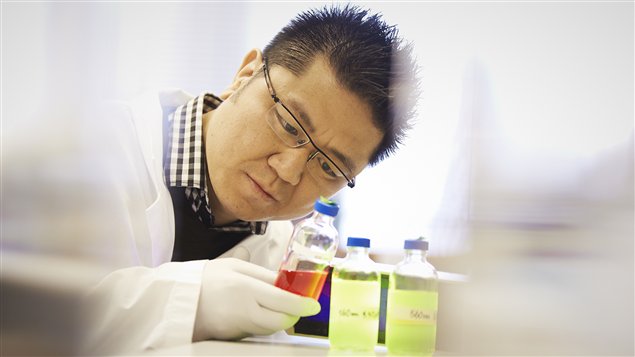Numerous infectious diseases could soon be diagnosed cheaply and rapidly with the use of nanoparticles and DNA enzymes thanks to research at the University of Toronto. Simple tests could speed up detection of disease and could eventually be carried by individuals travelling abroad.
In 2002 “We started to play around with how to apply nanotechnology to deal with biomedical problems,” said Warren Chan, professor at the Institute of Biomaterials and Biomedical Engineering at the University of Toronto. Researchers soon became inspired by the outbreak of SARS, severe acute respiratory syndrome.
“We decided to apply nanotechnology as a way to help detect the virus,” said Chan. “At that time a lot of people didn’t know what people were sick with or what a few people were dying with and so we figured we can actually help in that situation in case there’s a pandemic down the line.” Luckily there was no pandemic and that did not stop their research.
“What we’ve been creating is actually developing a bar-coding or a simple colour test for infectious diseases,” said Chan, explain that when the blood become infected with some disease the body attacks that molecule, a pathogen or bacteria that’s causing the particular disease.
“Your blood essentially becomes a fingerprint of your history of things you’ve been infected with… We’ve been trying to develop a nanotechnology solution that would allow us to visualize those fingerprints that essentially identify the disease. So the nanotechnology essentially becomes a sensor.”
Infectious diseases are the focus right now, but Chan thinks the technology could eventually extend to detect cancer, heart disease and other types of diseases.
Simplicity is one goal of the research. Chan and fellow researchers have devised a colour test so simple that all that would be needed would be some freeze-dried powder, some water and a drop of blood mixed together. The colour of the solution would determine whether a person has the disease or not.
They also want to create a small automated device that could do the test and be easily carried by a traveller. “Really I think what we’ve done is revolutionary in the sense that we are trying to make this practical,” said Chan all the while noting there is heavy competition with other labs in the US and Asia to create such applications for nanotechnology. “It’s really a race to get this to work.”
Chan compares it to the HIV test which is now available as a home kit. He suggests the type of test he is working on could be five to 10 years away from being commercially available. He notes the science is almost solved and now it is an engineering problem to work out how to apply the technology.
“People have been working on this for many, many years,” said Chan. “So (now) it’s really about the translation, the practicality, and the commercialization aspect.”







For reasons beyond our control, and for an undetermined period of time, our comment section is now closed. However, our social networks remain open to your contributions.